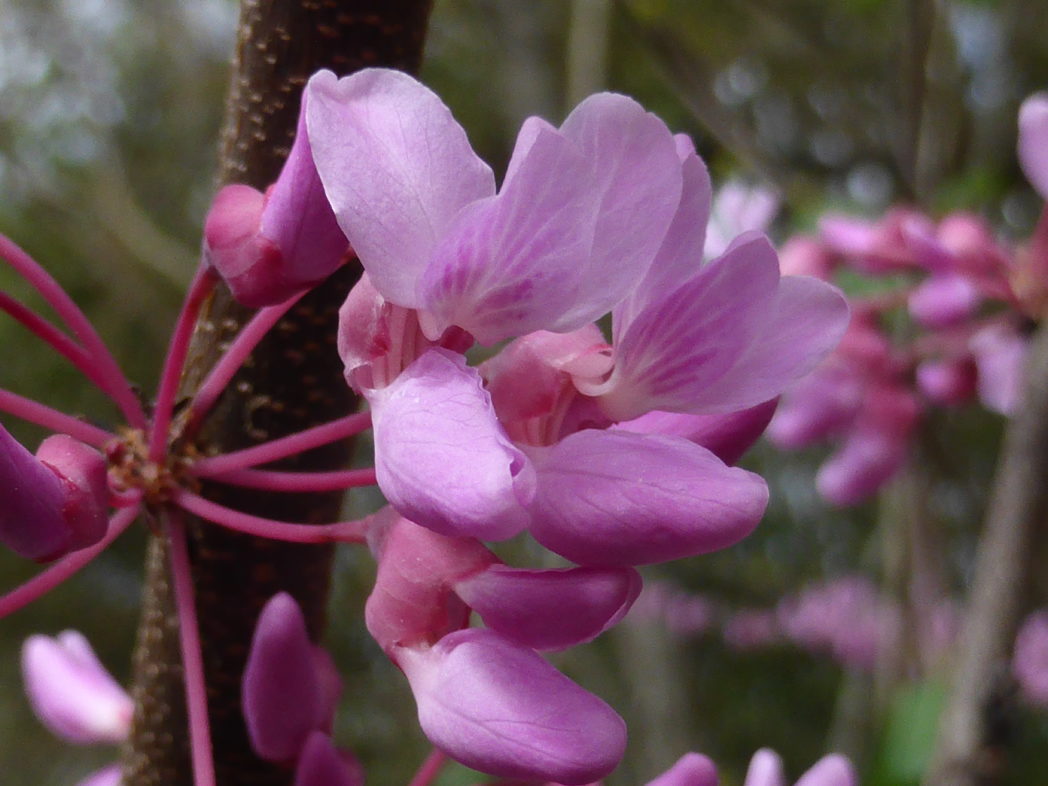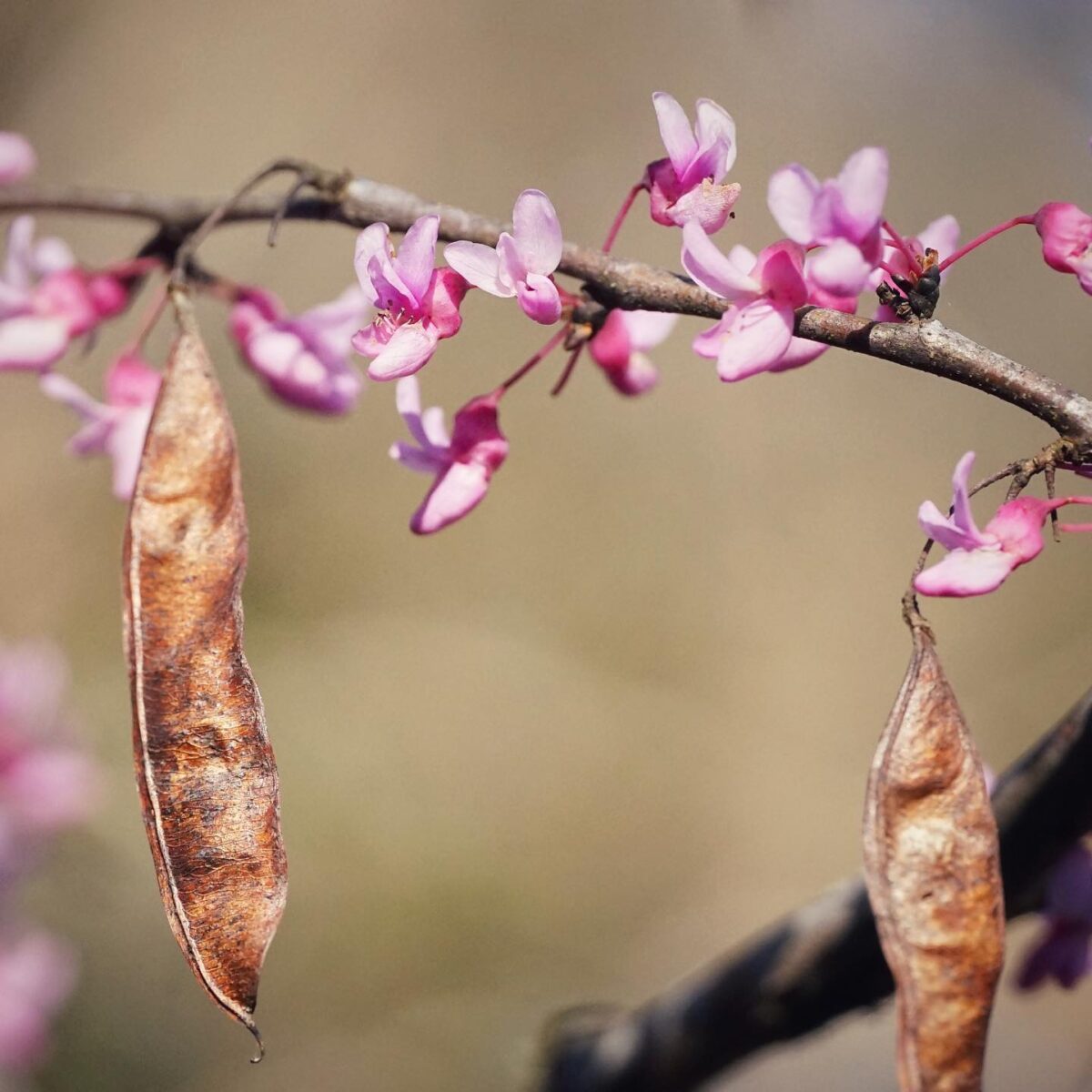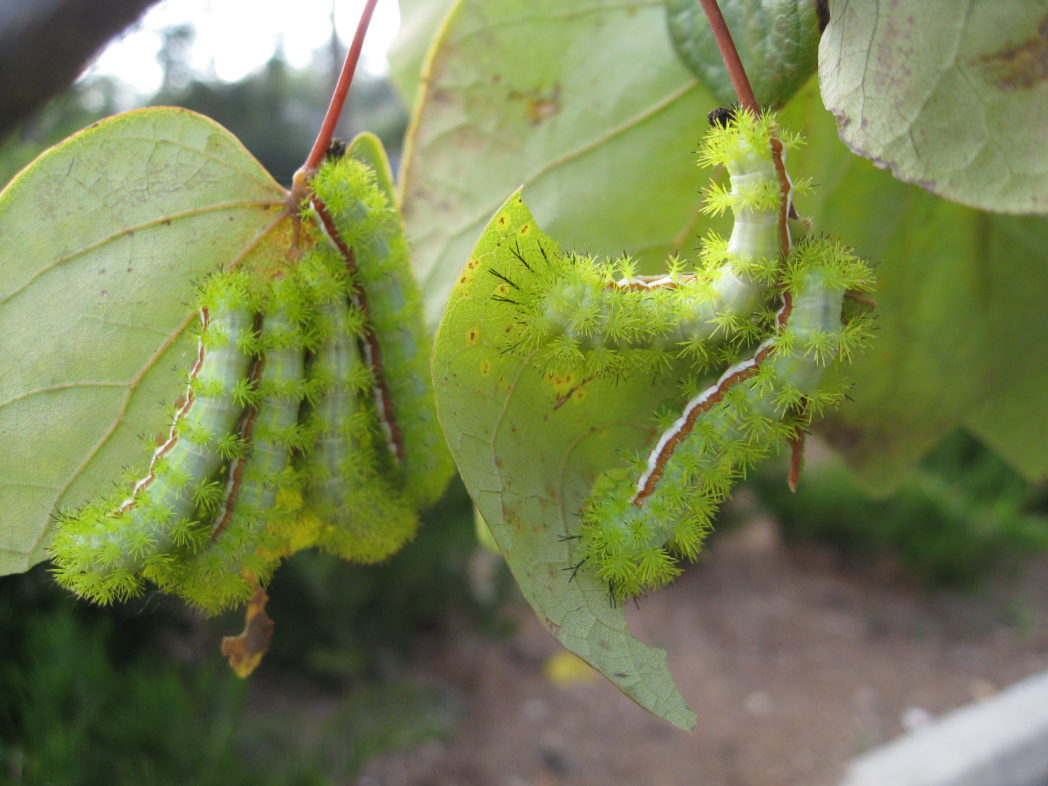Eastern redbud
Pictured above: Eastern redbud (Cercis canadensis) by Eleanor Dietrich. Click on terms for botanical definitions. View post as a PDF.
Eastern redbud is a deciduous perennial large shrub to small tree. It occurs naturally in mesic hardwood hammocks and typically blooms in March, at which time the entire crown of the tree will become covered in deep pink blooms. Its leaves provide food for many caterpillars, including the Io moth. Flowers depend on long-tongued bees for pollination. The plant is browsed by white-tailed deer, and seeds are eaten by bobwhites and other birds.
Eastern redbud’s irregular flowers are pink to magenta and born in clusters of four to eight within leaf axils and along branches and trunks. Flower buds are small, dark red to reddish-brown, and appear in winter. They bloom in profusion before new leaves emerge. Young leaves are yellowish-green and emerge folded along the midrib. As they mature, they unfurl and turn a dull green. They are paper-thin and cordate to orbicular with entire margins and a pointed apex. In the fall, they may turn bright yellow. Leaf arrangement is alternate. The trunk is often twisted and covered in gray to reddish-brown bark. Branches are thin and may zigzag as they grow. Fruits are flattened pods that contain 10 or more seeds.
Both the flowers and seeds are edible to humans; flowers can be eaten raw or boiled and seeds may be roasted.
Family: Fabaceae (Legume, pea or bean family)
Native range: Panhandle; north and west central peninsula
To see where natural populations of Redbud have been vouchered, visit www.florida.plantatlas.usf.edu.
Lifespan: Perennial
Soil: Well-drained neutral to mildly acidic soil; can tolerate occasional periods of brief flooding
Exposure: Full sun to partial shade
Growth habit: 15–30′ tall with crown spreading to 10–30′
Propagation: Seed
Florida regions of landscape suitability: North, Central
Garden tips: Redbud is a relatively fast-growing flowering tree. Plant it with flowering dogwood for a beautiful, colorful spring display. It is susceptible to canker, so diseased branches should be pruned as soon as they are noticed. For more information, read the UF/IFAS publication on Eastern redbud.
Caution: Many cultivars of Eastern redbud have been developed. Select trees grown from local seed sources for best results.
Redbud plants are available from nurseries that specialize in Florida native plants. Visit www.PlantRealFlorida.org to find a nursery in your area.
Learn more about Redbud from the Florida Native Plant Society and the Institute for Regional Conservation.



